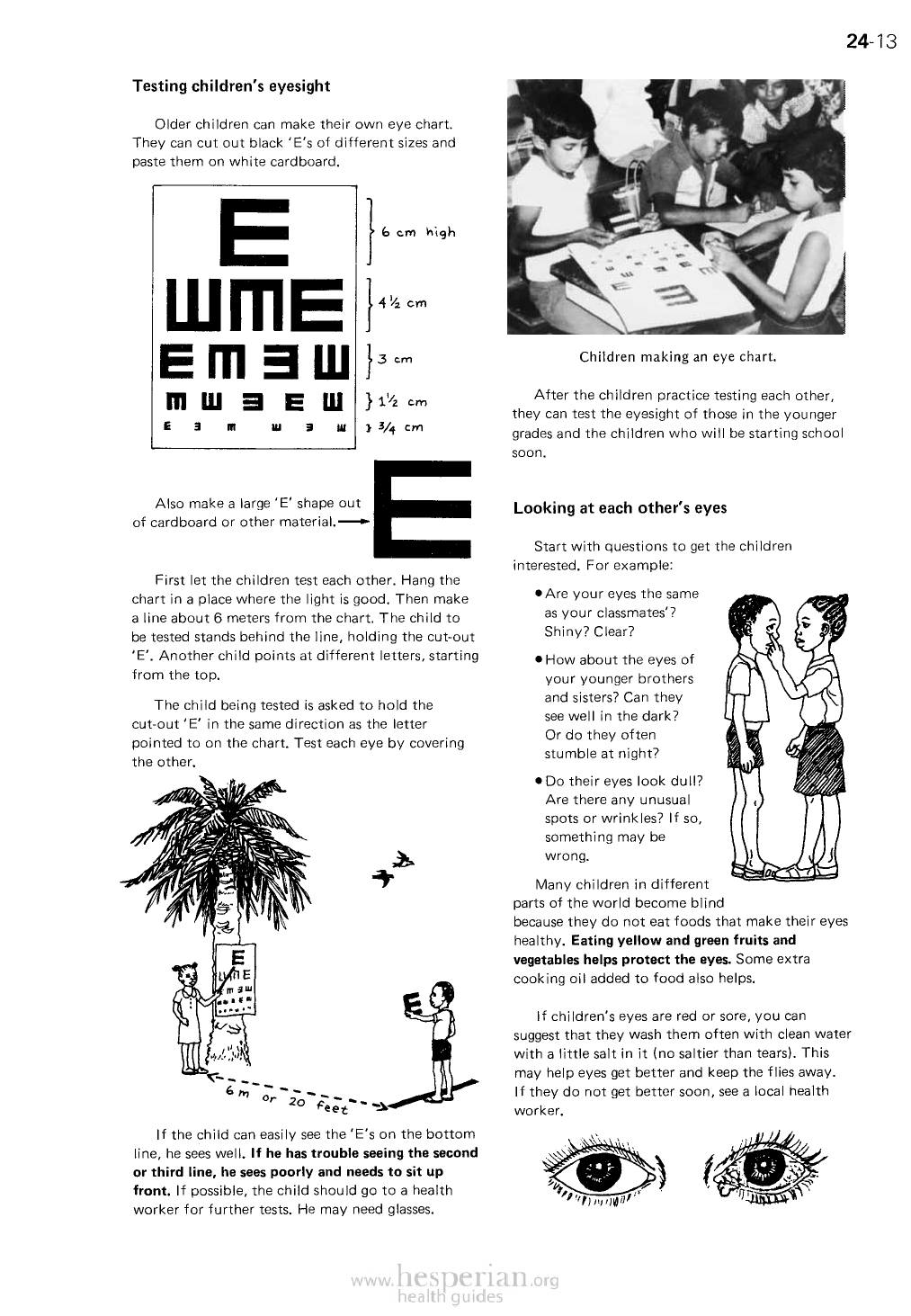
Testing children’s eyesight
Older children can make their own eye chart.
They can cut out black ‘E’s of different sizes and
paste them on white cardboard.
24-13
After the children practice testing each other,
they can test the eyesight of those in the younger
grades and the children who will be starting
school soon.
Also make a large ‘E’ shape out
of cardboard or other material.
First let the children test each other. Hang the
chart in a place where the light is good. Then make
a line about 6 meters from the chart. The child
to be tested stands behind the line, holding the
cut-out ‘E’. Another child points at different letters,
starting from the top.
The child being tested is asked to hold the
cut-out ‘E’ in the same direction as the letter
pointed to on the chart. Test each eye by
covering the other.
If the child can easily see the ‘E’s on the bottom
line, he sees welt. If he has trouble seeing the
second or third line, he sees poorly and needs
to sit up front. If possible, the child should go to a
health worker for further tests. He may need glasses.
Looking at each other’s eyes
Start with questions to get the children
interested. For example:
• Are your eyes the same
as your classmates’?
Shiny? Clear?
• How about the eyes of
your younger brothers
and sisters? Can they
see well in the dark?
Or do they often
stumble at night?
• Do their eyes look dull?
Are there any unusual
spots or wrinkles? If so,
something may be
wrong.
Many children in different
parts of the world become blind
because they do not eat foods that make their
eyes healthy. Eating yellow and green fruits
and vegetables helps protect the eyes. Some
extra cooking oil added to food also helps.
If children’s eyes are red or sore, you can
suggest that they wash them often with clean
water with a little salt in it (no saltier than tears).
This may help eyes get better and keep the flies
away. If they do not get better soon, see a local
health worker.